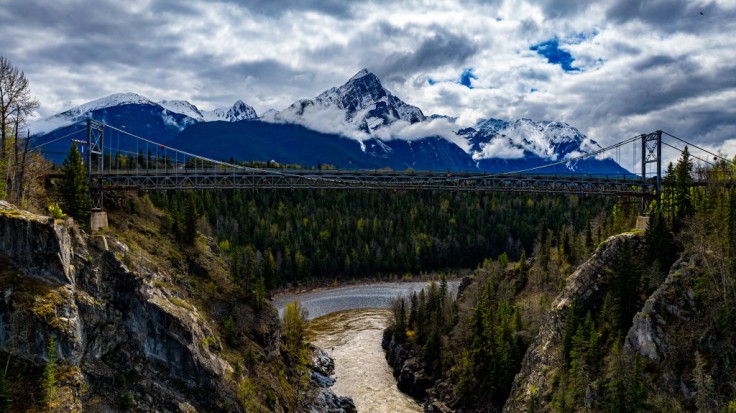
During the Memorial Day weekend, a 19-year-old teen had a close encounter with death after falling in the High Steel Bridge accident in a Washington Canyon fall.
Despite the significant fall, it was confirmed by the Mason County Sheriff's Office that the teen boy survived without battling life-threatening injuries and only walked away with minor injuries. The incident happened on a Saturday when the teen was trying to navigate the trail under the High Steel Bridge.
The authorities claim that the High Steel Bridge is one of the tallest railroad bridges in the country and is a notorious spot for multiple fatalities due to its steep and slippery terrain.
Teen Survives 400-Foot Fall in Washington's High Steel Bridge
Tim Ripp, a Mason County sheriff's patrol corporal involved in the rescue, emphasized the danger of these trails.
Ripp stated that they have told people to stay away from these trails because they are dangerous, but people either have not seen the warning signs or are disregarding them. The area around the bridge is marked with several warning signs detailing the risks, yet accidents continue to happen.
The teenager, whose identity has not been released, suffered only scrapes on his arms and was taken to a nearby hospital for evaluation. Despite the minor injuries, officials highlighted that the outcome could have been much worse, given the history of fatalities in the area.
Every year, five to seven individuals fall from the bridge, most resulting in death. The steep and unstable nature of the terrain makes it exceptionally hazardous, as explained by Ripp.
Challenging Rescue of 19-Year-Old from 400-Foot Canyon
The rescue mission, which lasted about two hours, involved deputies and firefighters using ropes and harnesses to reach and retrieve the teenager from the canyon.
West Mason Fire Chief Matthew Welander described the intricate operation, saying they hooked the 19-year-old teen into a harness and brought him all the way back up.
Welander said he was walking down a washout that a lot of people use, and it has kind of become a trail. Welander noted that the teenager ended up at the river, illustrating the perilous descent. He also stressed the importance of respecting nature and paying attention to warning signs to prevent such accidents.
"He was incredibly lucky," Welander remarked. The area has a notorious reputation for its deceptive appearance, leading many to underestimate the dangers.
Despite the presence of warning signs stating, "Warning: The areas around the high steel bridge are slippery, steep, and unsafe for exploring," people continue to venture into the hazardous zones. Welander attributed these incidents to a lack of respect for the natural environment and a tendency to ignore safety precautions.
Washington High Steel Bridge Accident
Welander revealed the harsh reality of rescues at High Steel Bridge. He added that they got a lot of practice hauling dead bodies out of the notorious accident spot, saying that for every person rescued alive, approximately twenty fatalities occur.
Rescue teams are deployed three to five times a year, depending on the circumstances. Aside from accidental falls, the area also witnesses suicides, further complicating rescue efforts. The rescues are not only resource-intensive but also pose significant risks to the rescuers themselves.
Welander recounted past incidents where rescuers were injured during operations, highlighting the inherent dangers of these missions. One notable incident involved Deputy Tim Ripp, who sustained severe injuries while recovering bodies in August 2020.
Ripp shared that a boulder came down and struck another deputy in the face. He went off the cliffside, and Ripp caught him and ended up getting injured in the process. However, the deputy's injuries required an 18-month recovery period, during which he lost feeling in both arms.
Ripp now warns others about the dangers of venturing off the designated trails. "Don't go off trail, it-I can speak from experience, your loved ones are going to appreciate that you don't go off the trail," he advised.